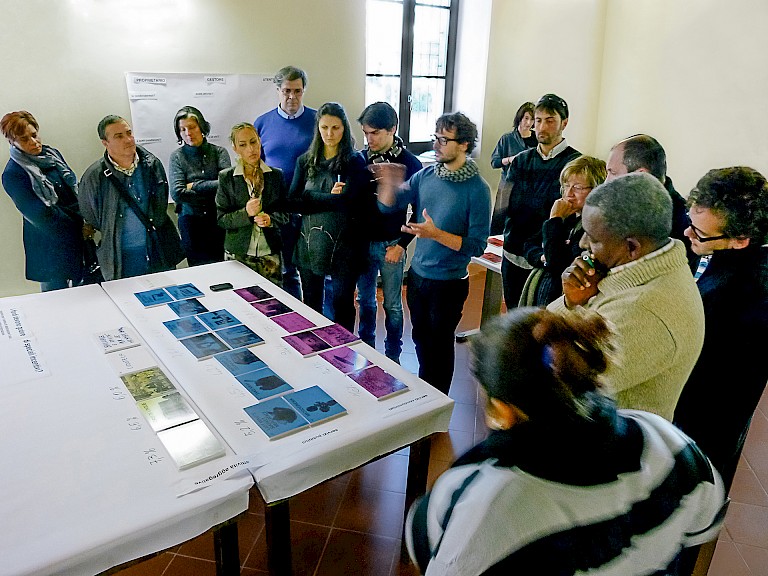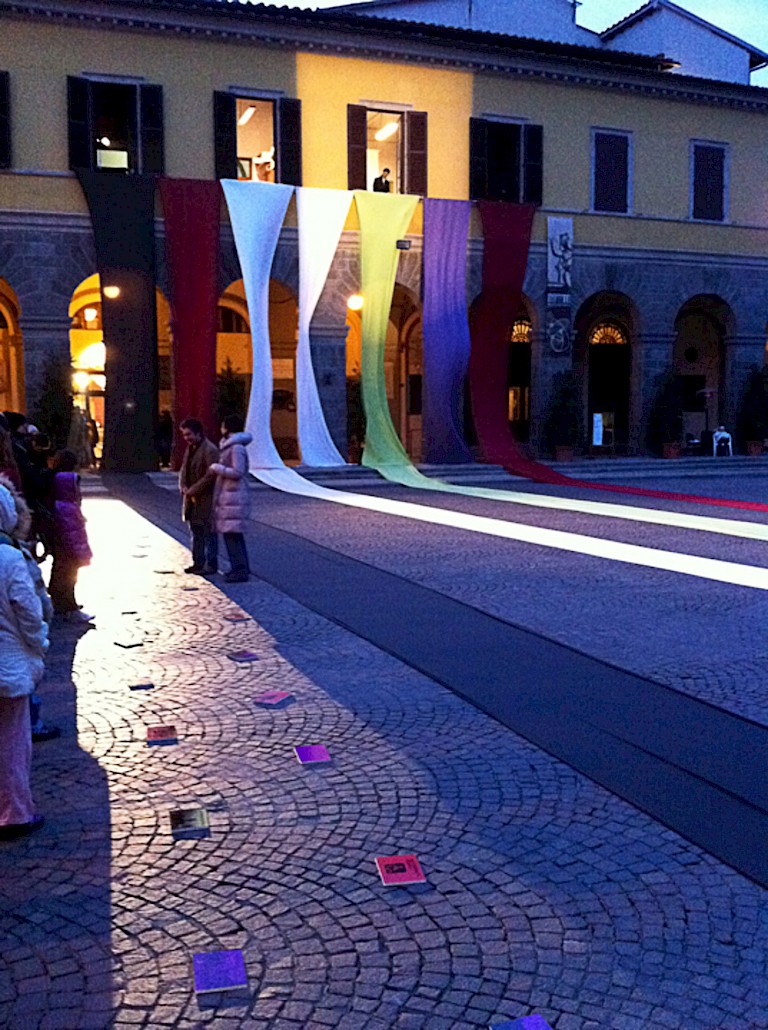



Artway of Thinking built a platform of trust between the new residents, the suburban residents, and the local government, by organizing several activities such as informal dinners, practices of observation, the installation of a temporary office for the collection of housing problems, and workshops that resulted in the translation of the data collected in a collective physical performance. Through the cartographic practice of classification and redesign of the historical center's spaces, the artists stimulated the blur of generational and ethnic divisions, and redefined together the aesthetical paradigms of the new multicultural community. The community produced three collective maps: the Love Map, about shared spaces; a public services map, composed of more than 66 requests in form of colored cards; and an aesthetics map, that collected the beauty and the ugly perceived by the participants.
Besides increasing collective awareness of art as a fundamental value for social change, IDENTITÀ AL CENTRO achieved innovative results in cultural, social, urban and financial terms. In social terms, it increased the self-organization of citizens, who elected some “foreigners” as representatives to the City Council. In urban terms, it allowed the inclusion of the citizens’ requests in the Strategic City Plan 2011. In financial terms, culture became a key factor in local civic strategies, for which the Public Administration of Montevarchi obtained 30 million euros of public funds to develop ideas that grew out of the project.
In cultural terms, IDENTITÀ AL CENTRO has contributed enormously to the current debate on Italian historical city centers, since almost all Italian cities are ancient. Before WWII they were mostly considered as “containers of heritage” to be protected for the creation of the unified image of the Bel Paese (Beautiful Country); currently they are perceived mostly as postcards, and judged in relation to their capacity to attract visitors and spectators. This second framework for a city center achieves more immediate financial results, but simultaneously contributes to the weakening of social structures and spatiality, ultimately changing the space’s identity and communities.
By redefining the perception of the historical centre as result of the community interaction, Artway of Thinking reveals the treasure of human heritage increased by multicultural components, for the transformation of “public” spaces into “common” spaces.
The artists behind IDENTITÀ AL CENTRO succeeded in translating the results of the project both in political language and in visual/emotional expressions through the new symbolic and cultural values expressed by the people. Finally, by introducing the need for quality of social participation to be weighed against the statistical consensus-based approach, the artists enabled both better local politics and the creation of a sense of belonging for the multicultural community to the city center, characterized by the presence of a different history.
All copyright belongs to Shanghai Academy of Fine Arts, Shanghai University.



